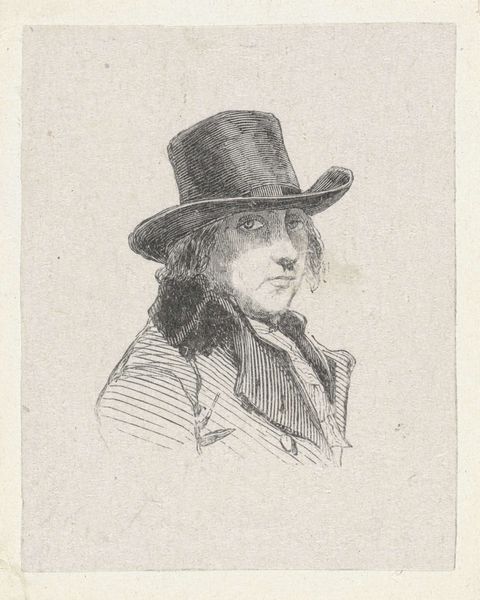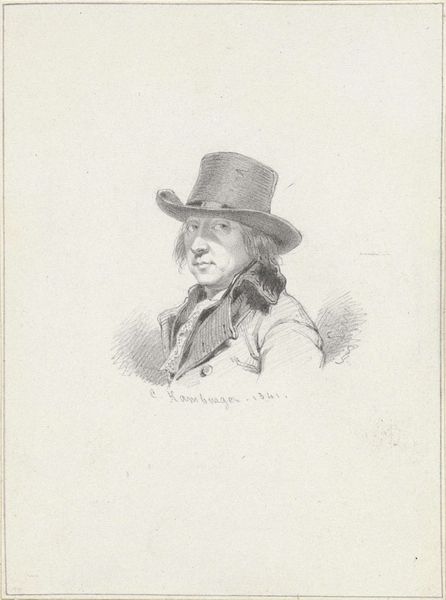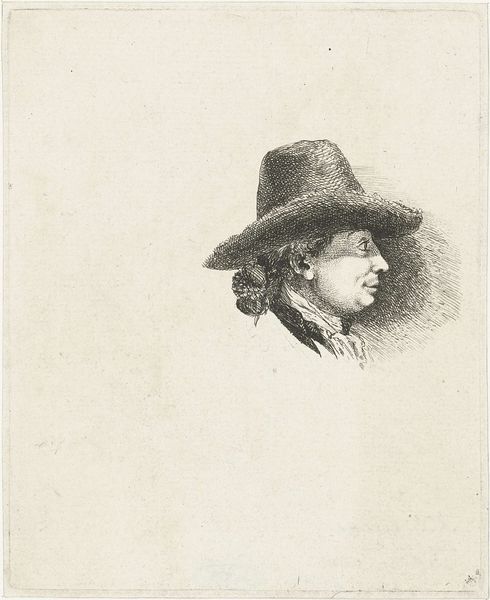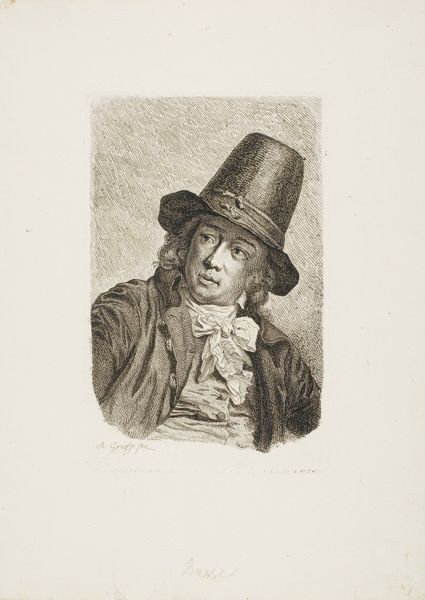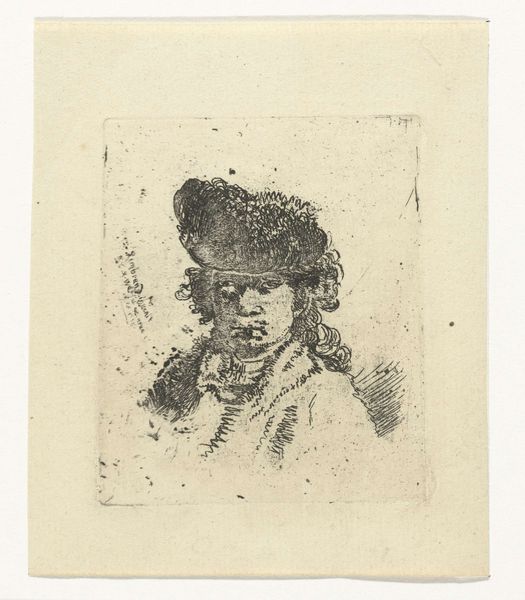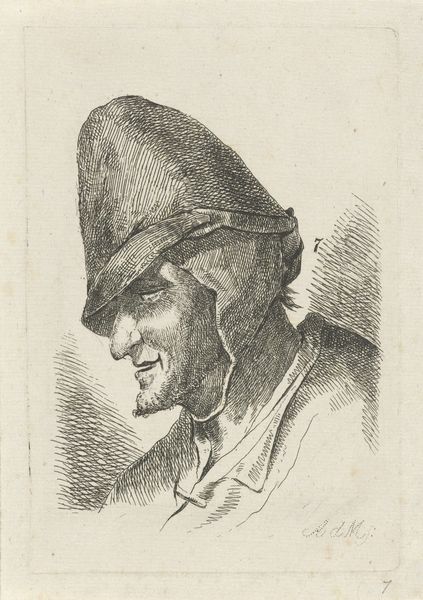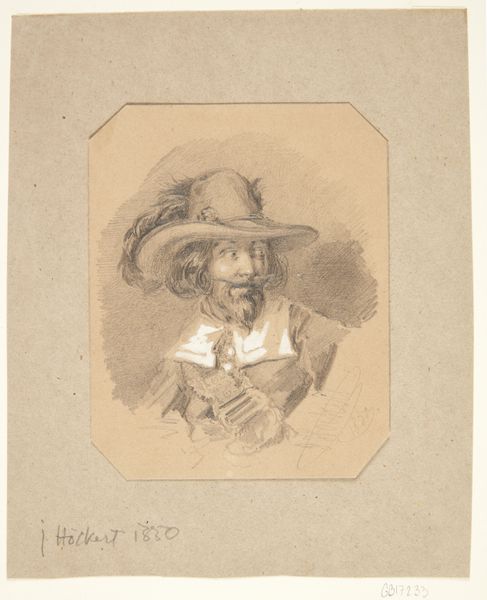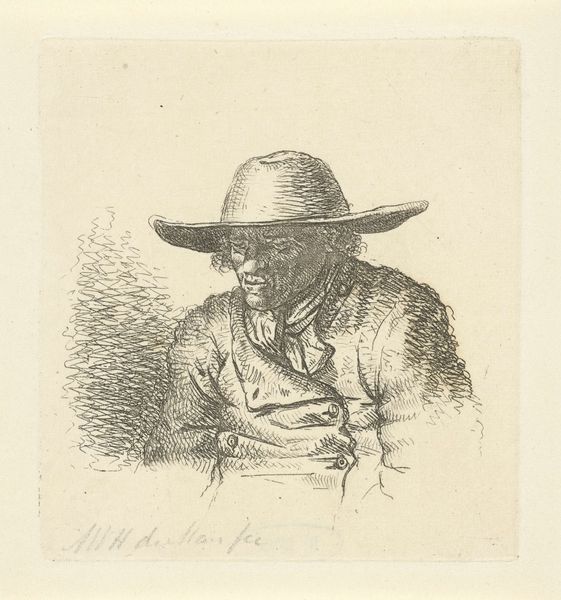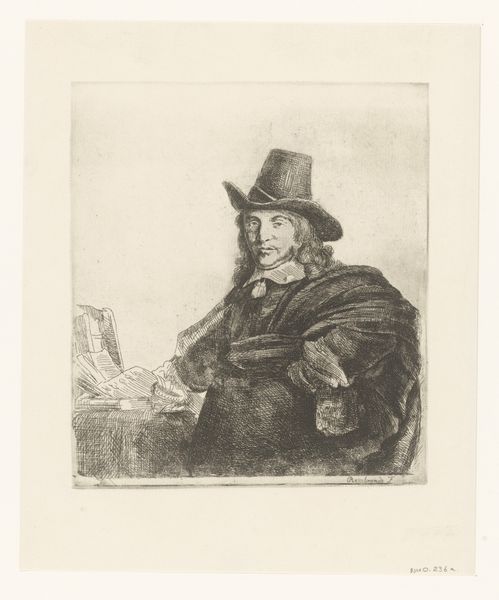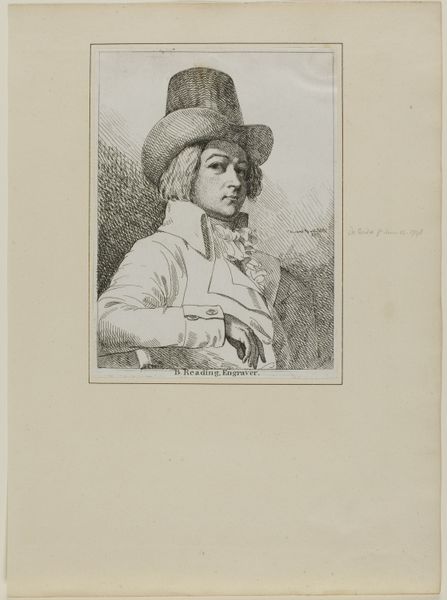
print, etching
#
portrait
# print
#
etching
#
romanticism
#
line
Dimensions: height 89 mm, width 81 mm
Copyright: Rijks Museum: Open Domain
Curator: What a brooding image, isn’t it? There’s something melancholic about his downward gaze. Editor: The first thing that strikes me is the line work— the cross-hatching used to build up tone and volume feels quite economical. How does it tie into the period in terms of production and dissemination? Curator: Good eye. This etching, titled "Portret van Abraham Uytenbogaart met hoge hoed", comes to us from the hand of Jean Augustin Daiwaille. Dating from between 1796 and 1850, it is housed right here at the Rijksmuseum. Given its medium, etching, we can consider how these reproducible images affected the circulation of identities. Editor: Etchings, engravings, the proliferation of these reproductive technologies democratized the image in some sense, though access would still depend on economic class. This image, as a commodity, invites us to think about social access to art and ideas in this period. Now the subject, Uytenbogaart; tell me more. The hat certainly telegraphs a specific social standing. Curator: Indeed. The top hat as a marker of bourgeois identity is an apt point. In terms of symbolism, consider the hat shading his eyes, almost veiling his face from our view. It’s like a visual metaphor for a hidden inner world, characteristic of Romanticism, don’t you think? Editor: It's not just the hat casting a shadow, it is also a very material, and perhaps social weight. These fashions signify status and wealth, achieved at what human cost during the industrial revolution. It's quite a potent condensation of themes when considering Romanticism's relationship to industrialism. Curator: Excellent points. It's fascinating to delve into the intersection between psychological and material culture, especially within portraiture. Editor: Absolutely. Considering Daiwaille's approach, he effectively uses readily available and more accessible materials to create art. The distribution of these materials makes one think about artistic value and audience much differently. Curator: This piece offers us layers, both hidden and explicit, and reveals its significance upon examination. Editor: Indeed, seeing beyond the surface is seeing the structure beneath, and both form meaning.
Comments
No comments
Be the first to comment and join the conversation on the ultimate creative platform.
